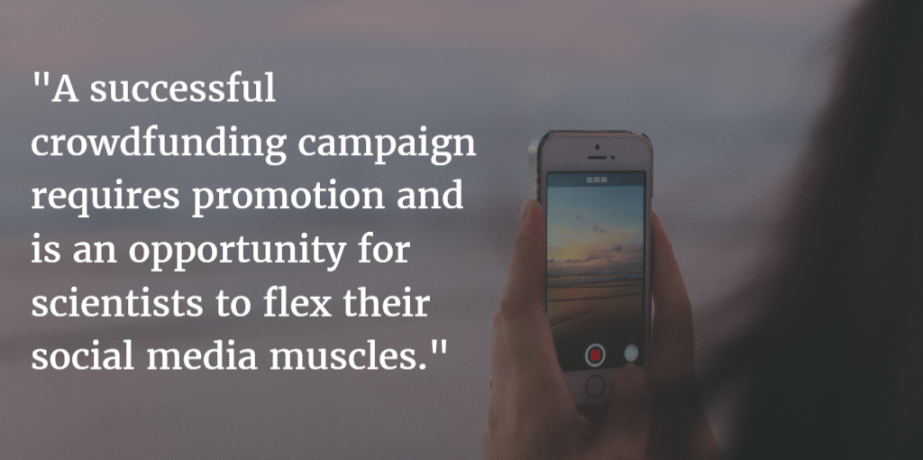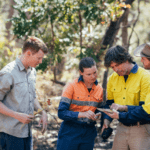On the surface, entrepreneur and scientist may seem like two very different careers; one may be focused on developing marketing strategies and generating sales, while the other may spend more time in the lab designing experiments and writing papers. Though the day-to-day of the two careers may seem unrelated, the commonalities between entrepreneur and scientist are quite substantial. At their core, entrepreneurs and scientists both create and test hypotheses and develop solutions to problems. The challenges faced are also paralleled in both career paths from funding to communication.
In this post I share tools and strategies that one may be more likely to learn in entrepreneurship courses, which scientists can use to advance their funding capacity, outreach, and careers.
Value proposition
In the realm of business, a value proposition is a short sentence that encompasses three main points: what your product/service is, who your target customers are, and the value your business will provide to these customers. Entrepreneurs use this tool to communicate the value of their company to customers and investors. Though they may not have customers in the traditional sense, scientists can use the value proposition framework to describe their research, who it affects, and the impact of their findings, allowing them to deliver a targeted message when communicating with colleagues and stakeholders.
The main challenge entrepreneurs face when creating a value proposition is focusing their ideas into a succinct, relevant message. Entrepreneurs are sometimes eager to explain all the functionalities of their new product or the impact their business will have across several industries, but communicating at this scope can be overwhelming for an audience. The same challenge can be said for scientists when communicating their research. Scientists can get caught up in the details and include jargon, which can be confusing to a general audience or even to scientists who specialize in another field.
Although the value proposition is a short sentence, it can take hours to prepare by refining complex ideas and developing simple explanations of complex topics. But the effort is worth it. Having a value proposition helps you stay on track with everything you do, from how you invest your time and energy to how you communicate to others. The value proposition is also an important component of your elevator pitch.
The Elevator Pitch
For entrepreneurs, an elevator pitch is a short (approximately 30 second) description of your business in plain language. An elevator pitch includes a hook to pique the interest of your audience: what you do, who it affects, and why it is important—key components of your value proposition. The name stems from an imaginary scenario of being in an elevator with someone and trying to explain your business before you reach your floor. An elevator pitch can be altered depending on the audience of the message, so it is common to have several versions of your pitch ready.
For scientists, if you are speaking with someone who is already familiar with your field of study, you may be able to delve more deeply into your research. If you are speaking with someone who is unfamiliar with your field of research, you may spend more time on definitions and provide a high-level description of your work and its applications. Scientists can use the elevator pitch for communicating their research and its importance or application in a succinct way and in a variety of forums. Scientists can deliver elevator pitches while networking at conferences to market their skills and promote their research. The elevator pitch and value proposition can also be leveraged to engage a very large audience.
Crowdsourcing
Crowdsourcing is the method of completing a substantial task by using the combined effort of many people working on smaller, individual tasks. Entrepreneurs have harnessed this method through activities such as hackathons, where a group of computer developers come together for a weekend to create an application. Scientists have utilized this method to compile large amounts of data over vast geographic areas, which they otherwise could not accomplish on their own. For example, is a mobile app that citizen scientists all over the world use to photograph animal species and then tag them on a world map, which allows scientists to locate endangered species by geographic area. A BioBlitz is another example of crowdsourcing in the scientific community. This is when a group of citizen scientists come together for a short period of time, in a specific location, and identify and record as many species as possible. This crowdsourcing allows scientists to determine which species occupy a certain ecosystem, and it has even lead to the discovery of new species!
Crowdfunding
Crowdfunding is financial crowdsourcing and is another common group-based tool used by entrepreneurs. It is the practice of funding a project or venture by raising small amounts of money from many individuals, often via the internet. Through websites such as Kickstarter and Indiegogo the general public can donate money to entrepreneurs, sometimes in exchange for rewards. Entrepreneurs create an account on one of these websites to market a new product they are developing. Members of the public who support the idea can donate money to fund the development of the prototype of that product and, in doing so, can receive rewards such as branded t-shirts or the opportunity to purchase one of the first products after they have been developed.
While this is very popular for entrepreneurs, it is a fairly new tool in the scientific community. Experiment and SciFund are examples of online crowdfunding platforms specifically for scientific research. While most scientific research requires tens of thousands of dollars, crowdfunding platforms can be used to fund smaller-scale experiments, to purchase a new piece of equipment, or to cover travel costs to a conference or research site. A successful crowdfunding campaign requires promotion and is an opportunity for scientists to flex their social media muscles.
Social media
Crowd resourcing methods are fueled by large-scale marketing, which can be very expensive. However, social media is a fantastic way to reach a large-scale audience for little to no cost. Entrepreneurs use social media, such as Twitter, Facebook, and YouTube, to spread the word about their business to targeted markets. Scientists also use social media to spread the word about their research to peers, stakeholders, and the public. There are Twitter conferences where scientists are given a time slot to present their research in a series of tweets. Scientists can use themed hashtags to stimulate dialogue (e.g., #ActualLivingScientist and #ILookLikeAnEngineer). In Canada, Science, Action! is a great avenue for scientists to explain their research in a short video format posted on YouTube.
As a bonus, these tools have the capacity to improve scientific literacy among the general public. Social media channels have an immense reach, making science communication accessible and entertaining to a wide demographic, including youth who are at a pivotal time in their career development.
Though they may appear very different from the surface, science and entrepreneurship have a lot of common ground. Scientists can take advantage of an entrepreneur’s toolkit to reach their funding, outreach, and data-collection goals. Many scientists have already begun to use these tools, and the future provides much potential for continued and expanded integration of entrepreneur tools by scientists.





